Eve Galanis
Graduate Student, American Studies, Trinity College
TEACHER'S SNAPSHOT
Historical Background
In the 20th century, there were monumental advancements in psychology and mental health research that coincided with unprecedented growth of LGBTQ+ visibility. The simultaneous development of accepted mental health practices and queer advocacy over the decades offers a chance to examine how psychological research both helped and harmed LGBTQ+ individuals and communities.
*NOTE to TEACHERS The content in this lesson may be difficult or disturbing for some students. Please review the materials and use your judgment; you know your students best.
D1: Potential Compelling Question
D1: POTENTIAL SUPPORTING QUESTIONS
- What is “eugenics” and how did it influence society in the early 20th century?
- In what ways were people marginalized in mental health institutions in the 20th century?
- How did bias affect the evolution of science and medicine at the time?
D2: TOOL KIT
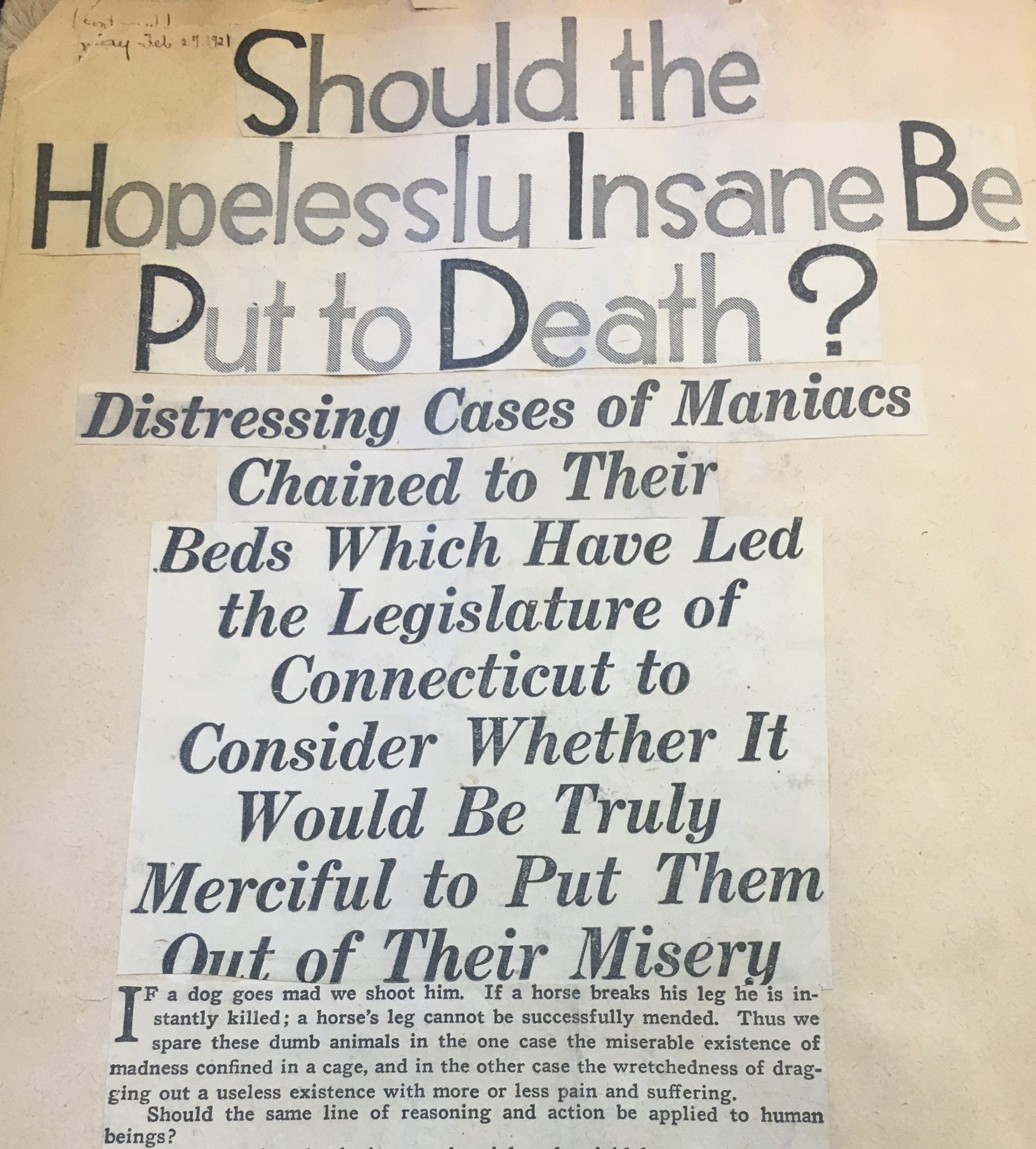
“Should the Hopelessly Insane Be Put to Death?” Hartford Times, February 27, 1921. CVH Scrapbooks: Departments of Mental Health CSHI/CVH Records, A. Superintendents Scrapbooks Ca. 1867-1896, Accession #90-018, Box 1, Connecticut State Library.
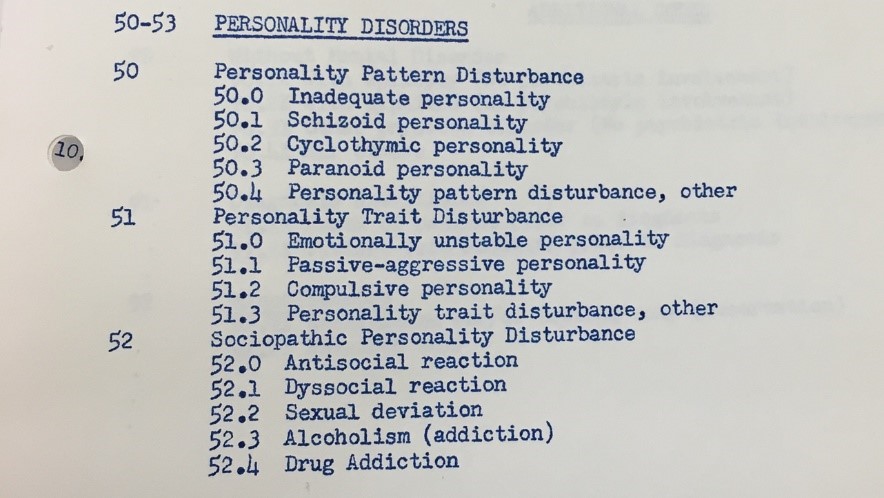
“Meeting of the Committee for the Study and Prevention of Sex Offenses.” January 31, 1951. Office of the Governor Notes. RG 005:032, John Davis Lodge, 1951-1955. Connecticut State Library.
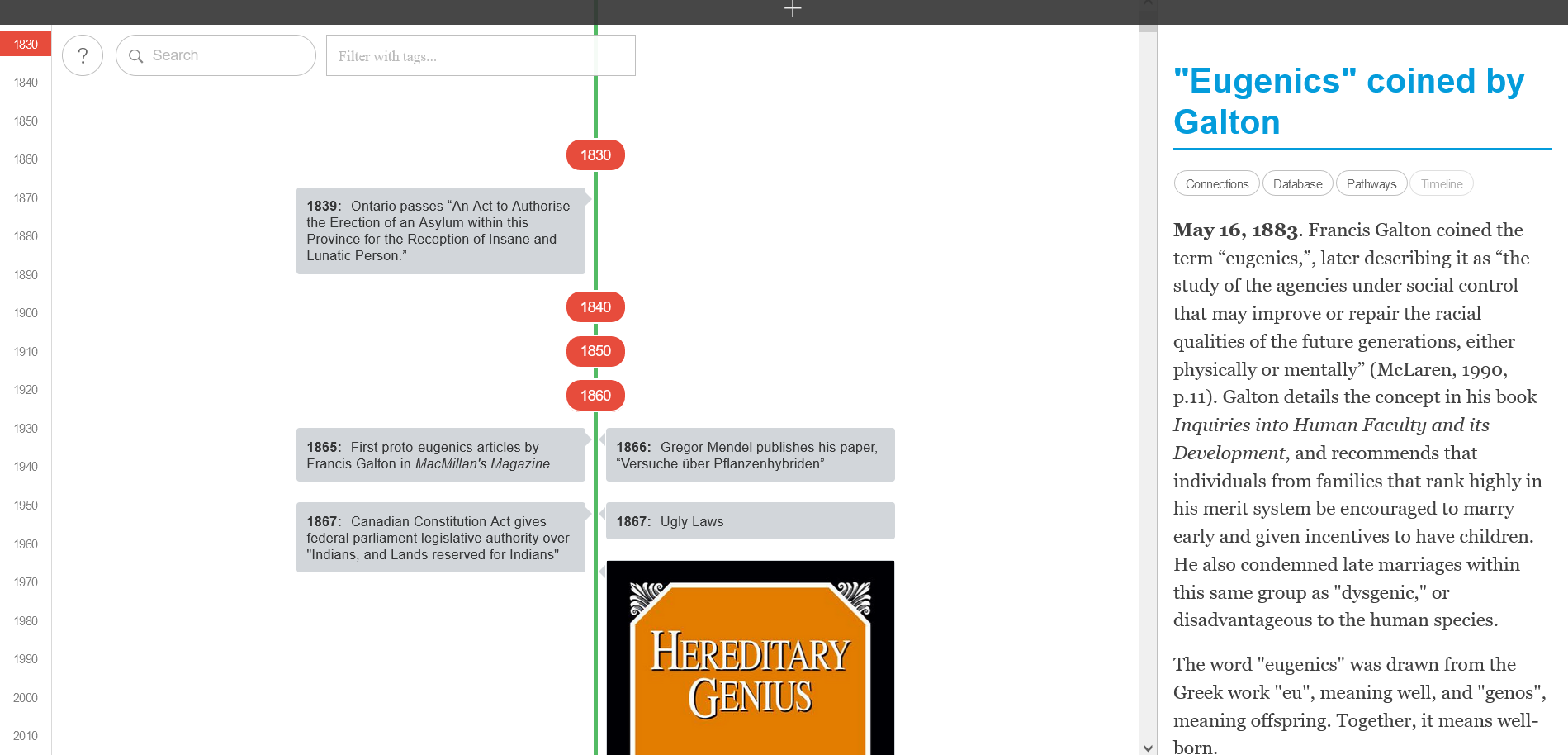
Interactive Digital Timeline. Alexandra Minna Stern, Eugenics Archives, Social Sciences and Humanities Research Council of Canada.
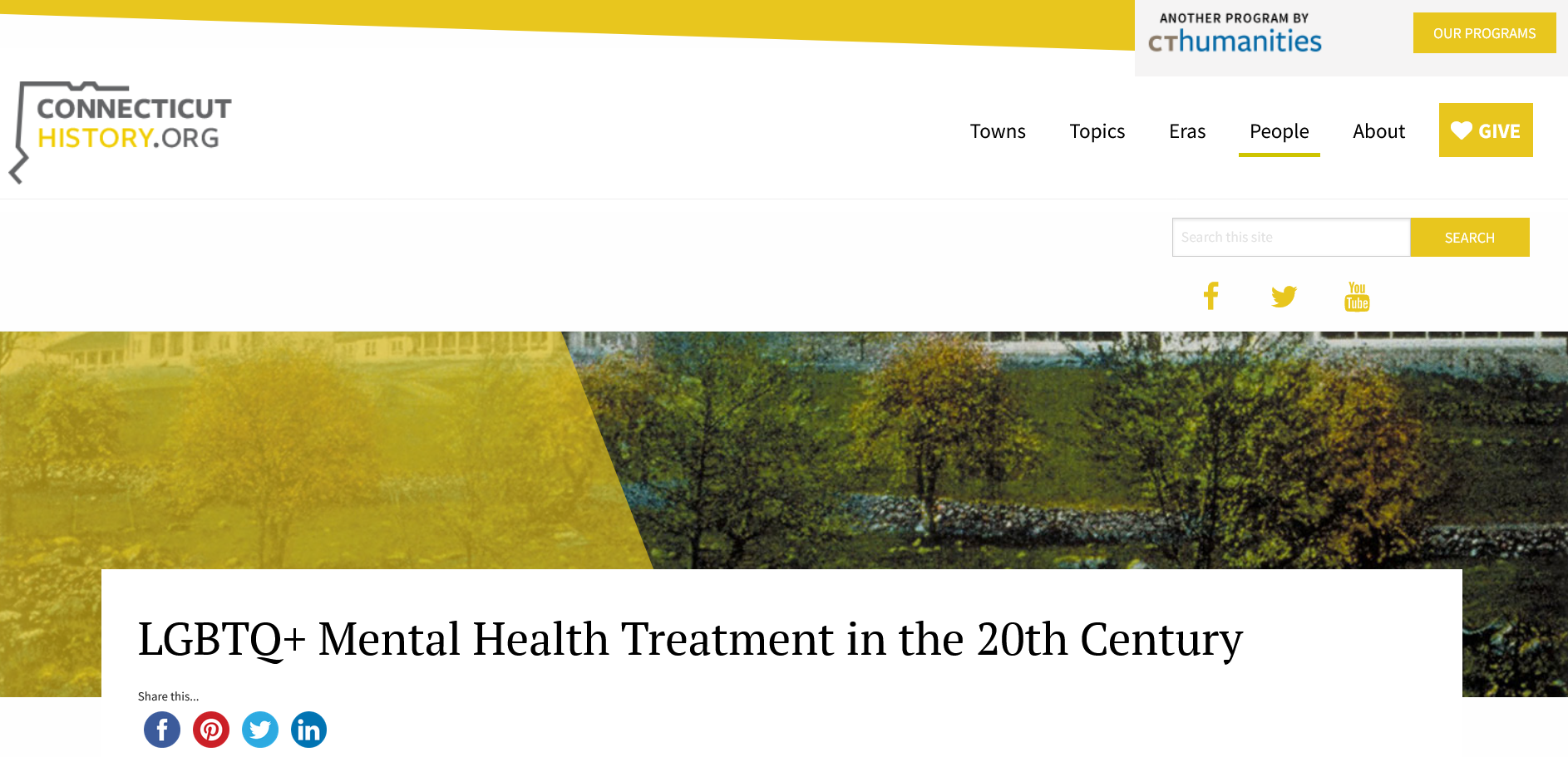
Galanis, Eve. “LGBTQ+ Mental Health Treatment in the 20th Century.” ConnecticutHistory.org, February 8, 2022.
“The A.P.A. Ruling on Homosexuality.” New York Times, December 23, 1973.

“Gov. Malloy Signs Legislation Protecting LGBTQ Youth from the Destructive and Discredited Practice of Conversion Therapy.” Press Release, May 10, 2017.
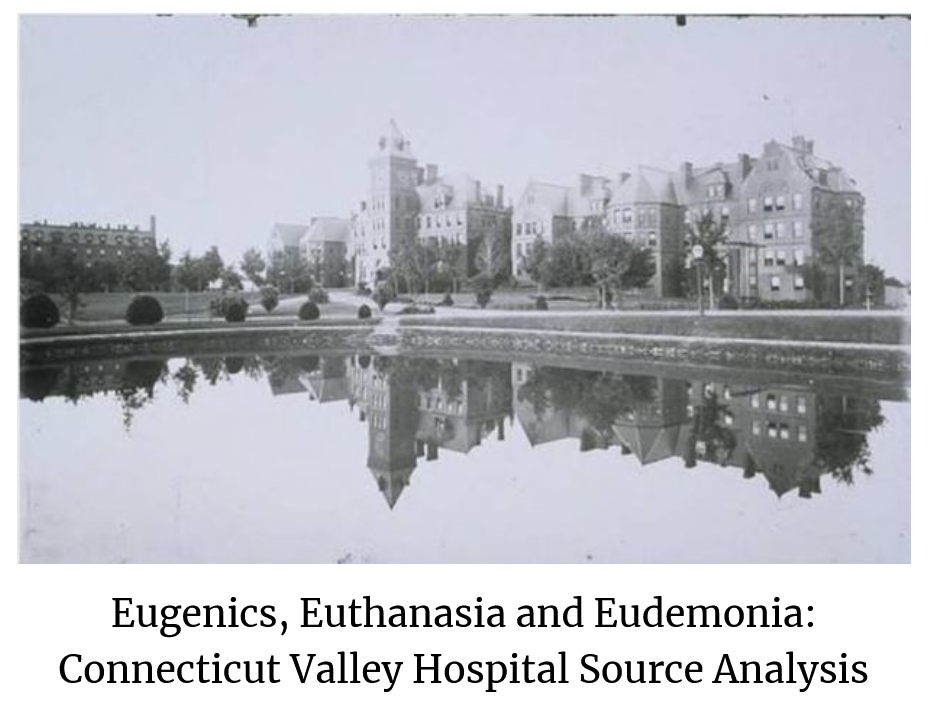
Galanis, Eve. “Eugenics, Euthanasia and Eudemonia: Connecticut Valley Hospital Source Analysis.” Intersectionality, Past and Present, November 2, 2021.
This article contains a deeper analysis and provides context for the “Engage” primary source activity. Teacher can use this as an extension.
D3: INQUIRY ACTIVITY
In this lesson, students will examine the history and legacy of LGBTQ+ medicalization in Connecticut throughout the 20th century. Medicalization is the view or treatment of something as a medical concern, problem, or disorder.
Using the sources in the toolkit, students will construct either an analytical project or a digital timeline.
Engage:
Read the headline from an article that was published in the Hartford Times on February 27, 1921.
1. What are your initial thoughts and feelings as you read this headline?
2. Which words stick out to you in this headline? Why do they stick out?
Now, examine this image of categories of personality disorders that was published by the Connecticut Department of Public Health in 1951.
3. What do you think “sexual deviation” meant at this time?
4. Looking at this list of “Personality Disorders” from 1951, what do you think about all of these items being grouped together in the same category?
5. Based on these images, what inferences can you make about mental health treatment during this time?
Explore:
Examine this Interactive Digital Timeline that explores the various ways eugenics influenced ideas around sexuality, gender, and body autonomy. Click on the topic links in the web and a detailed analysis will display to the right.
Make a copy of the Sequence Chart (PDF version here). As you examine the digital timeline, record the events you believe were important to understanding the history of eugenics. While you populate the organizer, think about how each event influences future consequences. You will later use your notes to create your own timeline or an analytical project.
Explain:
Read the following article: “LGBTQ+ Mental Health Treatment in the 20th Century.”
After reading, answer the following reading response questions:
1. According to the article, what is eugenics?
2. How did many people view homosexuality in the 1900s?
3. What law was passed in Connecticut in 1909? What were the effects of this law?
4. What world history events caused the eugenics movement to fall out of favor in the United States? What were the long-term effects of the eugenics movement?
5. How did people define LGBTQ+ identity in the mid-20th century?
6. What did Aaron G. Cohen recommend in 1951 for LGBTQ+ children? When was this practice finally banned?
7. What events influenced the modern LGBTQ+ movement?
8. How did perspectives on LGBTQ+ mental health change in the late 20th century?
9. What organizations emerged during this time? What did they do to support people?
10. What are the author’s conclusions about modern LGBTQ+ mental health? Do you agree? Why or why not?
After you’ve read the secondary source above, with a partner, examine this New York Times article from 1973.
Use this Written Document Analysis Worksheet to organize your thoughts as you analyze the text.
Extend:
In 2017, Governor Dan Malloy passed a law banning conversion therapy for minors in the state of Connecticut. Examine the Official Government Press Release.
Closure discussion or “Exit Ticket”:
1. In your own words, summarize the Official Press Release. Why is it important?
2. In 3-5 sentences, compare and contrast the 1973 A.P.A ruling to the 2017 press release. How did perceptions of LGBTQ+ identity shift over the years?
D4: COMMUNICATING CONCLUSIONS
Evaluate:
- Using the sources provided in the lesson or others you find on your own, you will choose to construct a slideshow, video, podcast, or essay analyzing the ways 20th-century science and medicine both helped and hindered LGBTQ+ individuals. Consider the following:
What is eugenics and how did it influence society in the early 20th century?
How were LGBTQ+ people marginalized by psychological science throughout the 20th century?
How did bias impact the evolution of science and medicine at the time?
Cite at least three sources to explain your reasoning. - Using the sources provided or others you find on your own, create a digital timeline documenting the progression of LGBTQ+ mental health in the 20th century. Be sure to include as many details and events as possible. Students can use digital timeline template websites like Sutori or Timeline JS to complete the assignment.
ADDITIONAL RESOURCES
Place to GO
GLBTQ+ Archives, Central Connecticut State University Library
Connecticut State Library, Hartford
Things To DO
If your school does not have an LGBTQ+ organization club, consider forming one. Allyship and visibility is essential to promoting human rights and protecting LGBTQ+ youth from bullying and discrimination. How to Start a Gay-Straight Alliance (GSA), ACLU.
If you want to investigate LGBTQ+ history even further, check with your local historical society or library. LGBTQ+ historical research is challenging, especially the further back into history you go. Here is a guide to help you with your research: How to Look for Records Of: Sexuality and Gender Identity History.
Note: While the source provided grapples specifically with UK-based history, the article is useful to help you identify and search for key terms pertaining to LGBTQ+ history. You can also use LGBTQIA+ Issues in Records at the National Archives to explore primary sources in the United States.
Watch a video: Psychotherapy with LGBT Clients: Historical Perspectives Video (2:39)
Listen to a podcast:
- “Examining Connecticut’s LGBTQ+ History,” Where We Live, WNPR
- “Uncovering Connecticut’s LGBTQ+ History,” Connecticut Explored
Websites to VISIT
Historic Timeline of Connecticut’s LGBTQ Community, Connecticut Museum of Culture and History
History Day LGBTQ+ Topics, Connecticut State Library
LGBTQ+ History Primary Source Digital Archives, University of Washington Library Archive
Articles to READ
Galanis, Eve. “Canon Clinton Jones: A Revolutionary Figure in Connecticut’s LGBTQ+ History.” ConnecticutHistory.org, May 3, 2022.
Ryan, Hugh. “How Eugenics Gave Rise to Modern Homophobia.” Washington Post, May 28, 2019.



